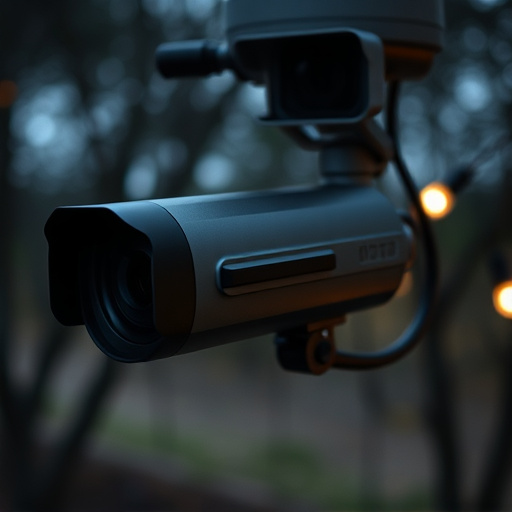In today's digital era, businesses rely on convincing decoy cameras as a discreet yet powerful tool for security and evidence capture. These concealed devices, strategically placed in high-risk areas, mimic real security equipment while recording authentic footage, serving as deterrents and reliable evidence sources. By integrating seamlessly with actual surveillance systems and maintaining a natural business flow, decoy cameras offer enhanced protection without compromising aesthetics or privacy. However, legal considerations and ethical guidelines regarding hidden camera placement are crucial for avoiding issues and maintaining trust.
In today’s digital era, discreet surveillance has become an essential tool for businesses aiming to protect their assets and maintain a safe working environment. This comprehensive guide delves into the art of disguised recording equipment placement. We explore the growing importance of convincing decoy cameras tailored for business environments. From understanding the legal landscape to mastering strategic positioning, this article equips you with insights to maximize effectiveness while adhering to ethical guidelines. Discover how to implement discreet surveillance without compromising privacy.
- Understanding the Need for Disguised Recording Equipment
- Types of Convincing Decoy Cameras for Business Environments
- Placement Strategies to Maximize Effectiveness and Minimise Detection
- Legal Considerations and Ethical Guidelines for Discreet Surveillance
Understanding the Need for Disguised Recording Equipment
In today’s digital age, businesses are increasingly relying on visual evidence to protect their operations and resolve disputes. Disguised recording equipment, also known as decoy cameras, offers a powerful solution for capturing authentic footage while maintaining operational secrecy. This is particularly crucial in high-security environments where the presence of monitoring devices could alter behavior or compromise safety protocols.
For businesses dealing with sensitive matters, such as fraud prevention, workplace investigations, or securing valuable assets, convincing decoy cameras are essential tools. They serve not only as deterrents but also as reliable recording devices that can provide irrefutable evidence when needed. By integrating these concealed cameras into various settings, organizations can enhance their security measures without compromising the natural flow of business activities.
Types of Convincing Decoy Cameras for Business Environments
In business environments, maintaining a sense of security and privacy is paramount. Among the various tools at security professionals’ disposal, convincing decoy cameras stand out as an effective deterrent. These innovative devices are designed to mimic real security equipment while capturing high-quality footage, thereby fooling potential intruders or malicious actors. From lifelike dummy cameras that blend seamlessly with surroundings to sophisticated LED models that can be remotely controlled and adjusted for different lighting conditions, the market offers a diverse range of options tailored to specific business needs.
For optimal results, strategically placing these decoy cameras in high-risk areas such as entrances, exits, and sensitive locations can significantly enhance overall security. Additionally, integrating them with real surveillance systems can create a layered defense mechanism that dissuades would-be perpetrators. With their discreet nature and advanced features, convincing decoy cameras represent a game-changer in business security, providing peace of mind and an extra layer of protection without compromising aesthetics or disrupting daily operations.
Placement Strategies to Maximize Effectiveness and Minimise Detection
Discreetly placing recording equipment is an art, especially when aiming to capture evidence or conduct surveillance. A well-thought-out strategy can significantly enhance the effectiveness of your setup while minimizing the risk of detection. One powerful tool in your arsenal are convincing decoy cameras for business purposes; these can act as valuable distractions, drawing attention away from the actual recording device.
When deploying such equipment, consider positioning them in areas that mimic legitimate security measures. For instance, placing decoys near entry points, exits, or high-traffic zones can make them seem like standard surveillance tools. This strategy not only helps in gathering vital footage but also serves as a psychological deterrent, making potential perpetrators think twice before acting suspiciously. Additionally, ensuring the equipment is mounted at eye level and blending in with surrounding decor or fixtures can further reduce its visibility.
Legal Considerations and Ethical Guidelines for Discreet Surveillance
In the realm of discreet surveillance, legal considerations and ethical guidelines are paramount to ensure responsible and compliant operations. When deploying convincing decoy cameras for business purposes, it’s crucial to understand local laws regarding hidden camera placement. Many jurisdictions have strict rules about consent, privacy rights, and where surveillance equipment can be set up without raising legal issues. For instance, certain areas of a business, like rest rooms and changing facilities, are typically off-limits for surveillance devices due to strong privacy protections.
Ethical guidelines also play a vital role in guiding the strategic placement of recording equipment. Businesses must strive to balance security needs with employee and customer privacy expectations. Transparent communication about surveillance practices is essential; informing individuals that they’re being recorded can help maintain trust and reduce potential legal risks. Additionally, using decoy cameras as a deterrent or for general observation is generally acceptable, but their primary use should always align with legitimate business interests while respecting individual rights.
Disguised recording equipment, especially convincing decoy cameras for business environments, offers a delicate balance between security measures and privacy concerns. By understanding the legal framework and employing strategic placement techniques, businesses can leverage these devices to enhance surveillance while adhering to ethical guidelines. Utilizing various types of decoy cameras and careful positioning can significantly improve safety without compromising the comfort of employees and customers alike.
